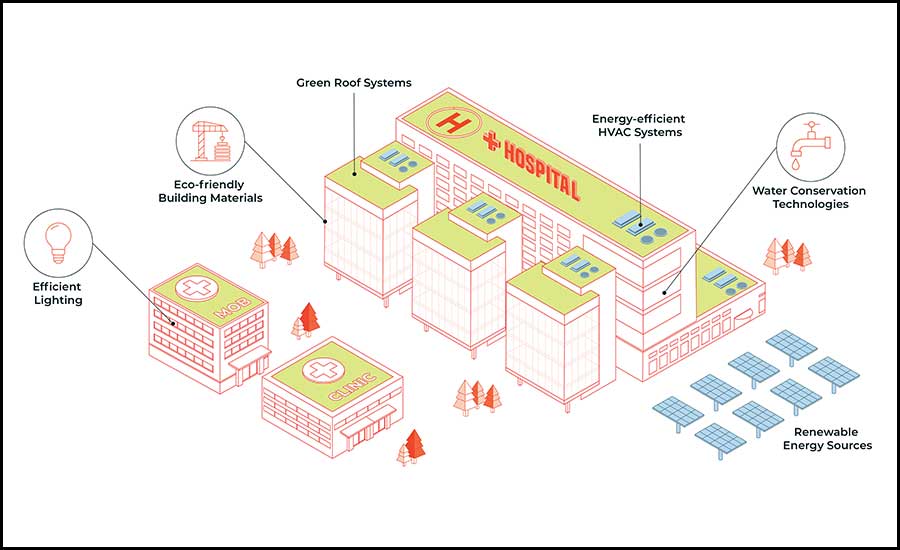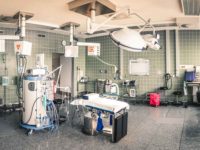Decarbonization refers to the act of lowering or eliminating carbon dioxide emissions produced from human activities, especially carbon fuel combustion, such as burning coal, oil, and natural gas. Carbon dioxide acts as a greenhouse gas by trapping heat in the atmosphere, contributing significantly to global warming as well as other damaging environmental consequences.
Decarbonization involves transitioning away from fossil fuels toward cleaner forms of energy, such as wind, solar and hydropower. To do this effectively requires various strategies. One is renewable energy, using wind and solar as replacement sources of power for fossil fuels. Another is energy efficiency, optimizing buildings, transportation and industry energy use to conserve more. Then there is carbon capture storage, collecting emissions generated during industrial processes before depositing them underground. Finally there is electrification, transitioning from fossil-fuel-powered cars to electric ones and electrifying heating/cooling systems.
As climate change impacts become ever more apparent, decarbonization measures have become essential. While many industries have taken steps to lower their carbon emissions footprints, U.S. health care facilities have been slower to act against climate change's harmful impacts. Fortunately, growing recognition of climate change’s impact on public health has resulted in renewed attention on decarbonization measures for health care facilities.

Since health care facilities account for a considerable portion of global carbon emissions, electrification is emerging as an attractive solution that may substantially lower emissions while creating healthier environments for patients, staff, and communities alike. An all-electric hospital could have tremendous potential to significantly reduce emissions while creating healthier surroundings for patients, staff members, and residents.
Incorporating Carbon Reduction Features
Engineering design of health care facilities is one of the key determinants in decarbonization efforts, providing opportunities to incorporate carbon reduction features such as these into healthcare buildings:
- Energy-efficient HVAC systems: HVAC systems represent one of the greatest sources of energy consumption within health care facilities. Investing in energy-efficient geothermal or solar heating and air conditioning units that use alternative forms of power for cooling purposes can significantly lower a facility's carbon footprint and reduce operational expenses.
- Efficient lighting: By adopting efficient LED technology into their facility lighting plans, health care providers can provide adequate lighting for medical procedures and patient care while decreasing energy use by 40% and reducing carbon emissions.
- Renewable energy sources: Health care facilities can generate their own renewable energy by installing solar panels or wind turbines, decreasing reliance on traditional sources while providing an independent backup source of power during power outages.
- Water conservation: Healthcare facilities require considerable amounts of water for medical procedures and patient care, making water conservation efforts especially vital in this sector. By adopting water-efficient technologies such as low-flow toilets and faucets, health care facilities can save water while decreasing energy use associated with pumping and treating it.
- Using eco-friendly building materials: Health care facilities can lower their carbon footprint by including eco-friendly building materials like recycled and locally sourced material in construction or renovation projects.
- Green roofs: Green roofs have become an increasingly popular feature for health care facilities, offering multiple advantages that reduce heat island effect, improve air quality and decrease storm-water runoff.
Decarbonization in health care facilities not only decreases their carbon footprint, but also benefits both patients and staff members' health and well-being. By adopting sustainable design principles into facility layout, we can build more resilient healthcare systems that serve both people and planet alike.
Electricity in Health Care Facilities
An all-electric hospital uses electricity for all its operations, including the HVAC systems. An all-electric hospital uses heat pumps to efficiently regulate building temperatures. Heat pumps use electricity to move heat around, making them far more energy-efficient than traditional HVAC systems that rely on burning fossil fuels for heating or cooling needs. Heat pumps can also serve as cooling systems as well heating systems. Furthermore, integrated energy storage solutions, such as batteries, provide reliable backup power during outages.
An all-electric hospital requires extensive electrical infrastructure upgrades to support increased electricity needs, including distribution system reliability and backup power systems, such as generators or batteries. Some facilities might even install electric vehicle charging stations.
Overall operational and budget costs associated with an all-electric hospital will differ based on facility size, location and existing infrastructure. Initial capital costs might be greater due to infrastructure upgrades and equipment installation needs. However, long-term operational costs of an all-electric hospital should be significantly less as energy costs diminish over time. Steam boiler replacement could substantially cut operational expenses.
As its energy needs come from renewable sources rather than fossil fuels, an all-electric hospital becomes less vulnerable to supply disruptions or price fluctuation. Moreover, indoor air quality may improve greatly leading to improved patient outcomes as well as healthier staff working conditions. Electrification in healthcare facilities — particularly all-electric hospitals — offers an effective means of cutting carbon emissions while creating a healthier environment for patients and staff alike. While initial costs associated with upgrading infrastructure and equipment might appear expensive, their long-term operational savings and other advantages make an all-electric hospital worthwhile investment.
Designing an All-Electric Hospital
Designing an all-electric greenfield hospital involves careful consideration and planning in order to achieve a smooth transition into more eco-friendly energy systems. A few essential steps are described below.
Considerations should include proximity to renewable energy sources, like solar panels, windmills and geothermal, as well as easy access to an electrical grid as a backup power supply source. Cleaner electricity networks increase chances that hospitals will meet their all-electric operation responsibilities. It may take many states years or decades before meeting all their clean electricity obligations toward all-electric hospitals. But some states are currently way ahead of others.
For a pre-existing hospital campus, the owner should conduct an energy audit of all existing campus buildings to ascertain energy consumption patterns, peak demand periods and potential energy saving strategies that could be implemented into a new hospital design. This audit should enable proper tracking of energy savings opportunities during its new hospital construction stage.
The first step is to determine the conceptual electrical requirements of an all-electric hospital's infrastructure. This will help the engineer to map out the full requirements and to determine the increased power requirements when compared to traditional hospital design. Due to current code requirements, electrical infrastructure must support an increasing demand for electricity. Due to peak load conditions, this means it should still include at least one diesel generator in its design, although its size should not cover 100% of hospital electrical consumption.
An all-electric hospital replaces traditional steam boilers with electric heat pumps or renewable sources like solar or geothermal. Heat pumps are particularly cost-efficient heating and cooling sources. HVAC heat pump systems designs for all-electric hospitals must consider various factors like size/layout of hospital, climate conditions and occupancy patterns when selecting appropriate heat pumps to maximize its effectiveness and reliability.
Use of Heat Pumps
Heat pump chillers offer another means to cut energy costs by providing chilled water for cooling systems and hot water for heating. They have similar technology to heat pumps and provide significant cost-cutting measures when compared with traditional air chillers.
Heat pumps tend to be more energy-efficient than traditional air-handling units as they rely on ambient air or ground temperatures rather than electricity as their source for creating heat. An energy-efficient air-to-air heat pump design usually includes outdoor air as a heat source or sink depending on whether heating or cooling is required, using refrigerant for either taking up heat from outdoors and moving it indoors to heat spaces, or vice versa for cooling applications. It typically includes an outdoor unit, indoor unit and refrigerant lines to operate effectively.
- Outdoor Unit: This outdoor unit houses the compressor, heat exchanger and fan. The compressor compresses refrigerant, increasing both its temperature and pressure. Heat transfer then occurs between refrigerant and outdoor air, and fan circulation moves air over heat exchanger to heat transfer mechanism for cooling effect.
- Indoor Unit: The indoor unit includes the heat exchanger and fan. The heat exchanger transfers heat from refrigerant to indoor air while its fan circulates it all around it.
- Refrigerant Lines: Refrigerant lines connect indoor and outdoor units by transporting refrigerant through pipes that circulate the refrigerant, while controls monitor its operation to maintain desired temperatures and humidity levels.
Microgrids
In April, the Centers for Medicare and Medicaid Services issued a categorical waiver to allow health systems to use clean energy microgrid systems to promote patient and community wellbeing as well as decarbonization and resilience within health systems. Microgrids are independent electrical power systems capable of working independently or as part of the local utility grid.
Microgrids have emerged as an essential solution in designing all-electric hospitals. They allow hospitals to efficiently use multiple renewable energy sources like wind or solar for power, as well as traditional electricity sources like diesel generators. Microgrid systems for hospitals provide a reliable energy supply while simultaneously decreasing carbon emissions. A typical microgrid system may consist of:
- Multiple Power Sources: These could include solar panels, wind turbines and diesel generators. Each source should be properly sized to meet the hospital's power demand.
- Energy Storage Solutions: These solutions, such as batteries or flywheels, store excess renewable energy for later consumption when demand increases.
- Switchgear and Distribution System: These control how power flows between energy sources and hospital’s electrical system.
- Microgrid Controller: The brain of the system, monitoring power sources and hospital power consumption while making necessary adjustments in flow for stable power provision.
- Backup Generator: This provides vital power supply to critical hospital systems during power outage or interruptions.
- Load-Shedding System: This mitigates strain on microgrid systems by automatically shifting noncritical loads during times of increased demand while maintaining stable power to essential hospital systems.
Envisioning an All-Electric Hospital
Designing an all-electric hospital from scratch requires thoughtful planning, consideration of various technologies and close collaboration among stakeholders. Key steps involved in designing an all-electric hospital are: site selection; conducting an energy audit; planning for diesel generator and electric kitchen equipment use; replacing steam boilers with renewable sources like wind or solar energy; designing an effective heat pump HVAC system to lower energy consumption; using microgrids as energy management platforms; and adding heat pump chillers as energy saving measures. These steps all play an integral part in realizing long-term savings while creating healthier conditions for patients and staff. By adopting all-electric solutions, hospitals can significantly lower their carbon footprint as well as create healthier environments while realizing significant carbon reductions.
WSP designed and built America’s first all-electric hospital for UCI Health’s campus in Orange County, California. UCI Medical Center Irvine will serve as a specialized acute care, ambulatory care and cancer research facility offering 24-hour emergency care and personalized cancer therapies, as well as specialist treatments, from neuroscience to orthopedics.
WSP designed the mechanical-electrical-plumbing (MEP) systems and delivered an incremental design-build project, with client's initial intention being to reduce natural gas use as much as possible. WSP went further, suggesting elimination of all-natural gas usage altogether and recommending electrification throughout the hospital. This included heating systems for humidification and sterilization purposes — an innovative new approach to health care design projects.
The first U.S. all-electric-powered central utility plant stands out as an all-electric utility infrastructure source for both hospitals and ACC campuses. There is no gas-fired equipment used for heating, cooling and steam generation during normal operation. Normal operation relies on 100% electric services for service generation, from chillers and air source heat pumps for heat recovery through chillers to air-source heat pumps as a key element for heating needs.
Air-source heat pumps represent one key differentiator when considering all-electric options. However, they pose unique challenges due to being noisy and taking up far more outdoor space than what can typically be found within central plants.
Exterior Design
Exterior wall shading and solar control solutions cut direct sunlight by up to 85% while simultaneously offering stunning views of the hospital’s natural surroundings. Optimizing for solar can differ significantly from optimizing for views, such as how best to orient and configure buildings that take full advantage of views of an exceptional natural preserve while simultaneously mitigating solar heat gain and providing adequate self-shading. Incorporating innovative ideas and comprehensive analysis of adjacent buildings was an important part of the process, such as using shading provided by adjoining buildings. On lower levels of the ambulatory care center, the hospital is helping to shade it, and vice versa. Positioning these buildings so they would work in harmony together was key to the overall design.
Horizontal overhangs proved most efficient at load reduction while providing preferable patient experiences and views. Shading devices within 2-3 feet from any given opening created an overall reduction of solar gain of 81% savings across both floors of hospital.
Today, UCI Health Irvine boasts one of the greenest energy portfolios for an academic medical center of this size and complexity.
Conclusion
Building and designing all-electric hospitals in the U.S. creates an eco-friendly healthcare system that supports sustainability and offers many advantages, from reduced energy costs and enhanced patient outcomes to decreased emissions and carbon reductions. Although initial costs may be greater, long-term savings and environmental advantages make this a worthwhile investment.
As the healthcare industry evolves and prioritizes sustainability, all-electric hospitals will gain momentum. By adopting new technologies and eco-friendly practices, healthcare systems will emerge as cost-effective and eco-friendly.





